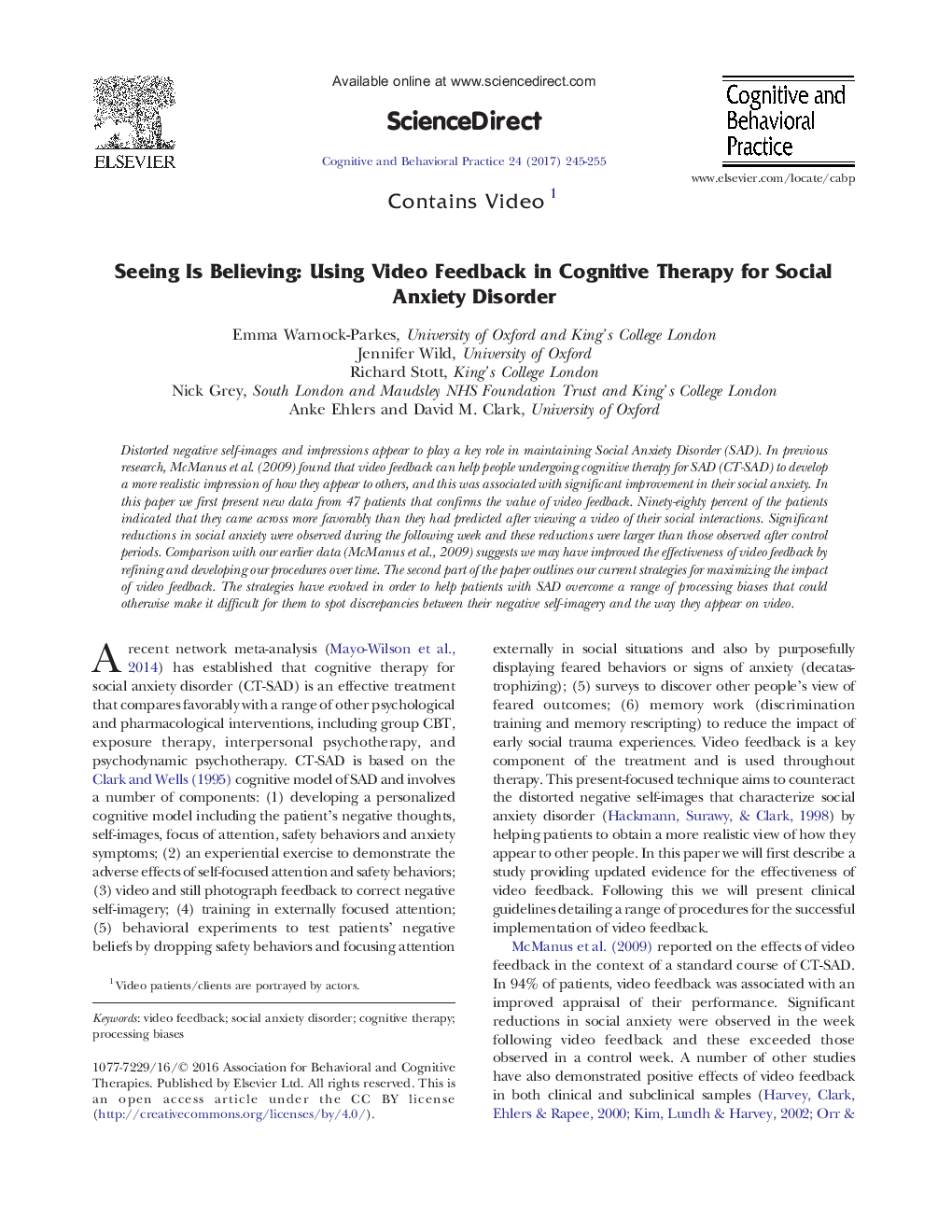| کد مقاله | کد نشریه | سال انتشار | مقاله انگلیسی | نسخه تمام متن |
|---|---|---|---|---|
| 5038602 | 1370279 | 2017 | 11 صفحه PDF | دانلود رایگان |
- Video feedback is an effective component of cognitive therapy for social anxiety disorder.
- Video feedback helps correct distorted negative self-images.
- Video feedback can also provide patients with insight into how their safety behaviors look to others.
- Social anxiety related processing biases can undermine the effects of video feedback if not addressed.
- Ways of circumventing the processing biases are described.
Distorted negative self-images and impressions appear to play a key role in maintaining Social Anxiety Disorder (SAD). In previous research, McManus et al. (2009) found that video feedback can help people undergoing cognitive therapy for SAD (CT-SAD) to develop a more realistic impression of how they appear to others, and this was associated with significant improvement in their social anxiety. In this paper we first present new data from 47 patients that confirms the value of video feedback. Ninety-eighty percent of the patients indicated that they came across more favorably than they had predicted after viewing a video of their social interactions. Significant reductions in social anxiety were observed during the following week and these reductions were larger than those observed after control periods. Comparison with our earlier data (McManus et al., 2009) suggests we may have improved the effectiveness of video feedback by refining and developing our procedures over time. The second part of the paper outlines our current strategies for maximizing the impact of video feedback. The strategies have evolved in order to help patients with SAD overcome a range of processing biases that could otherwise make it difficult for them to spot discrepancies between their negative self-imagery and the way they appear on video.
Journal: Cognitive and Behavioral Practice - Volume 24, Issue 2, May 2017, Pages 245-255
